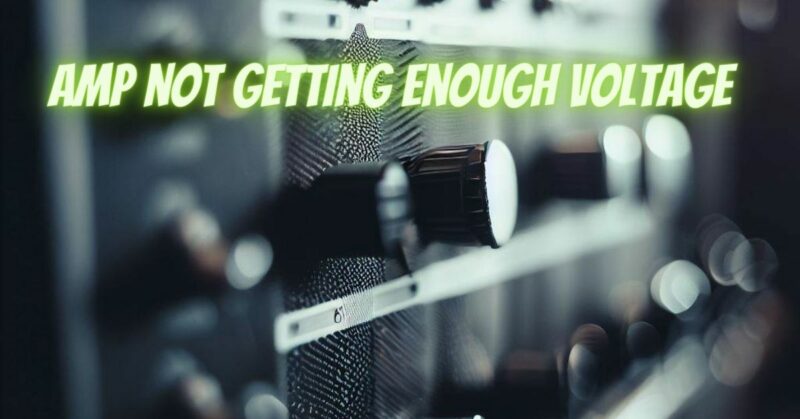Just like any other electronic device, an audio amplifier or amp also requires a certain amount of voltage to function properly. If the amp is not getting enough voltage, it can cause a number of problems, including low volume, distortion, and no sound.
What causes an audio amp not to get enough voltage?
There are a few things that can cause an audio amp not to get enough voltage. Some of these include:
- A loose or corroded connection: If the power cord is loose or corroded, it can cause a voltage drop. This can prevent the amp from getting enough power.
- A faulty fuse: If the fuse in the amp is blown, it will prevent the amp from getting any power.
- A bad power supply: If the power supply in the amp is bad, it will not be able to provide enough voltage to the amp.
- A short circuit: If there is a short circuit in the amp, it can cause a voltage drop. This can prevent the amp from getting enough power.
- A mismatch between the amp and the speakers: If the amp is not powerful enough to drive the speakers, it will not be able to provide enough voltage to the speakers.
- A problem with the speakers: If the speakers are damaged or not connected properly, they may not be able to receive enough voltage from the amp.
What are the symptoms of an audio amp not getting enough voltage?
If an audio amp is not getting enough voltage, there are a few symptoms that may be noticeable. These include:
- Low volume: The amp may not be able to produce a loud enough sound.
- Distortion: The sound may be distorted or fuzzy.
- No sound: The amp may not produce any sound at all.
How to fix an audio amp not getting enough voltage?
If you think your audio amp is not getting enough voltage, there are a few things you can do to fix the problem.
- Check the power cord: Make sure the power cord is properly plugged in and that there are no loose or corroded connections.
- Check the fuse: If the fuse in the amp is blown, replace it with a new fuse.
- Check the power supply: If the power supply in the amp is bad, replace it with a new power supply.
- Check for a short circuit: If there is a short circuit in the amp, have it repaired by a qualified technician.
- Check the amp’s specifications: Make sure the amp is powerful enough to drive the speakers.
- Check the speakers: Make sure the speakers are connected properly and that they are not damaged.
An audio amp not getting enough voltage can cause a number of problems, including low volume, distortion, and no sound. If you are experiencing any of these problems with your amp, you may need to check the power cord, fuse, power supply, or for a short circuit. You may also need to check the amp’s specifications and the speakers to make sure they are compatible.
Here are some additional things to keep in mind:
- If you are not comfortable working with electronics, you should have a qualified technician check your amp.
- If you are still having problems with your amp after checking the power cord, fuse, power supply, and for a short circuit, you may need to replace the amp.


